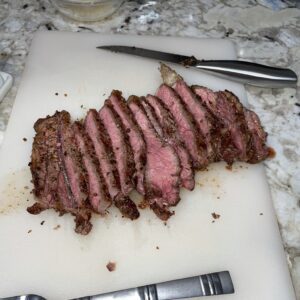Whiskey tasting is more than a hobby—it’s an art form steeped in tradition and rich with complexity. As such, it requires both knowledge and practice to truly appreciate its depth.
- The Beginning: An Introduction to Whiskey Tasting
- Understanding Whiskey
- The Art of Whiskey Tasting
- Step-by-Step Guide to Whiskey Tasting
- Whiskey Tasting Terminology
- Essential Tools for Whiskey Tasting
- Whiskey Tasting Etiquette
- Top Whiskey Brands for Tasting
- Conclusion
- References and Resources
The Beginning: An Introduction to Whiskey Tasting
Whiskey, known as the “water of life,” has a rich and varied history dating back hundreds of years. Its transformation from a humble grain into a nuanced, mature spirit is a journey that mirrors the whiskey taster’s own journey of discovery. Today, whiskey tasting has emerged as a refined pastime that offers a unique intersection of sensory pleasure, intellectual stimulation, and cultural engagement.
Understanding Whiskey
Whiskey’s diversity is part of its appeal. From smoky Scotch to spicy Rye, smooth Irish to rich Bourbon, each type of whiskey has its own distinct character. The flavor profiles of these spirits are influenced by everything from the grains used in their production to the aging process they undergo in wooden casks.
Scotch Whisky: Originating from Scotland, Scotch whisky, or simply Scotch, is made primarily from malted barley. It’s known for its smoky and peat-like flavor, attributable to the peat fires used in the malting process.
Irish Whiskey: Irish whiskey is typically smoother and lighter than other whiskies. Triple-distilled and aged for a minimum of three years in wooden casks, it often carries notes of vanilla, cream, and a touch of spice.
American Bourbon: Bourbon, native to the United States, particularly Kentucky, is a corn-based whiskey that must be aged in new charred oak barrels. It’s rich, full-bodied, and often carries notes of vanilla, oak, and caramel.
Rye Whiskey: Rye whiskey can be both American and Canadian. American rye is spicier and more robust due to its high rye content, while Canadian rye whiskies are generally smoother and fruitier.
Japanese Whisky: Japanese whisky has gained worldwide acclaim for its delicate balance of flavors. Often compared to Scotch, it can range from light and floral to heavy and smoky.
Tennessee Whiskey: A subset of bourbon, Tennessee whiskey undergoes an additional step known as the Lincoln County Process, where it’s filtered through sugar maple charcoal before aging, giving it a distinctive smoothness.
Remember, the journey of whiskey tasting is about exploring these nuances and finding the type that speaks to your palate.
The Art of Whiskey Tasting
Whiskey tasting is an exercise in mindfulness. It invites you to engage the senses of sight, smell, and taste to unlock the spirit’s secrets. From the initial swirl of the glass that reveals the whiskey’s color and body, to the sniff that teases out its aroma, to the sip that finally allows you to savor its flavor, each stage of the tasting process brings you closer to the essence of the whiskey.
Step-by-Step Guide to Whiskey Tasting
1. Choose the Right Glass: Opt for a tulip-shaped glass, which narrows at the top to concentrate the whiskey’s aroma. Avoid wide-rimmed glasses as they disperse the aroma.
2. Observe the Color: Hold the glass up to a natural light source and observe the color. The hue can give you a hint about the age and cask type. Generally, darker colors suggest a longer aging process.
3. Swirl the Whiskey: Gently swirl the glass. This helps to aerate the whiskey, releasing its rich bouquet of aromas.
4. Nose the Whiskey: Take a moment to smell the whiskey. Keep your mouth slightly open to allow the aromas to reach your olfactory senses. Try to identify the different smells – you may find hints of fruit, spice, wood, or smoke.
5. Taste the Whiskey: Take a small sip and let it roll across your tongue before swallowing. Try to identify the flavors. You may taste sweetness at the tip of your tongue, bitterness at the back, or spiciness on the sides.
6. Evaluate the Finish: After swallowing, breathe out slowly. This is known as the finish. The taste left in your mouth can give you more insights into the whiskey’s character. Longer finishes often signify a high-quality whiskey.
Remember, tasting whiskey is not about rushing to the finish line. It’s about savoring each moment and letting your senses guide your understanding of this timeless spirit.
Whiskey Tasting Terminology
Just as a sommelier needs to understand wine terminology, a whiskey taster needs to be familiar with phrases like ‘nose’, ‘finish’, and ‘body’. These terms allow you to articulate your tasting experience and deepen your understanding of the whiskey’s character.
- Nose: This term refers to the aroma or smell of the whiskey. It’s discovered through the act of swirling the whiskey gently in the glass and then taking a moment to inhale its scent.
- Finish: Essentially, this is the aftertaste left in your mouth after you’ve swallowed the whiskey. It can be short, medium, or long and allows you to identify the subtle flavors that linger post-swallow.
- Body: This describes the texture or weight of the whiskey in your mouth. It can range from light to full-bodied. A full-bodied whiskey typically has a rich, heavy feel on the palate.
- Palate: This term refers to the flavors you taste on your tongue. It’s not just about identifying whether the whiskey is sweet, bitter, or spicy but also about discovering the layers of flavors like vanilla, oak, or fruit notes.
- Legs: These are the droplets that form and trickle down the side of the glass after you’ve swirled the whiskey. They can give you a hint about the alcohol content and the body of the whiskey.
- Burn: This term describes the stinging sensation in the back of the throat when you swallow the whiskey. A smooth whiskey will have less burn, while a cask strength whiskey may have a notable burn.
- Peat: Often used in the production of Scotch, peat gives the whiskey a distinctive smoky flavor. The term ‘peaty’ is often used to describe whiskies with this characteristic.
Essential Tools for Whiskey Tasting
Tulip-Shaped Glass: This is the recommended type of glass for whiskey tasting. Its shape helps concentrate the whiskey’s aroma, enhancing the tasting experience.
Tasting Notes Journal: Keeping a journal can enrich your whiskey tasting endeavors. It allows you to record your observations, reflections, and flavor profiles for future reference.
Water Dropper: A few drops of water can open up the flavors of whiskey, especially for cask strength variants. A water dropper ensures precision in adding the right amount.
Whiskey Stones: If you prefer your whiskey chilled but don’t want it diluted, whiskey stones can be a great tool. They keep your drink cool without impacting its flavor.
Flavor Wheel: This is a reference tool that helps identify the many possible flavors in a whiskey. It’s an excellent guide for beginners and seasoned tasters alike.
Whiskey Tasting Etiquette
There are few rules in whiskey tasting, but those that exist are there to enhance your enjoyment. For instance, avoid wearing heavy perfumes or consuming spicy foods prior to a tasting, as these can interfere with your sensory perception. If you’re hosting a whiskey tasting, present the bottles in the order of their intensity, from light to full-bodied.
Top Whiskey Brands for Tasting
For both beginners and experienced whiskey aficionados, a few whiskey brands remain renowned for their exceptional quality and distinct flavor profiles. Brands such as Macallan, Jameson, Maker’s Mark, and Sazerac Rye are regularly recommended.
Macallan: Average price for 750ml – $275. Macallan is celebrated for its deep and intricate flavor profile.
Opt for it if your palate leans towards notes of dried fruit, wood spice, and chocolate.
Jameson: Average price for 750ml – $47.50. Jameson is a smooth and adaptable Irish whiskey.
Select it if you appreciate light, floral flavors with a touch of sweetness.
Maker’s Mark: Average price for 750ml – $45. Maker’s Mark is a robust bourbon with a smooth finish.
Choose this if you’re a fan of vanilla and caramel flavors.
Sazerac Rye: Average price for 750ml – $55. Sazerac Rye embodies the spicy character typical of rye whiskeys.
Choose it if you thrive on bold, peppery notes.
Glenfiddich: Average price for 750ml – $125. Glenfiddich is a legendary single malt Scotch with predominantly fruity flavors.
Opt for it if you favor refreshing notes of apple and pear combined with a hint of oak.
Conclusion
The journey into whiskey tasting is an enriching one. It offers the promise of new discoveries, sensory delights, and a deeper appreciation for one of the world’s most revered spirits.
References and Resources
For those keen to continue their whiskey education, resources like Jim Murray’s “Whisky Bible” and the website “Master of Malt” offer a wealth of information. Whether you choose to dive into the history, science, or culture of whiskey, remember—it’s all part of the tasting journey.




